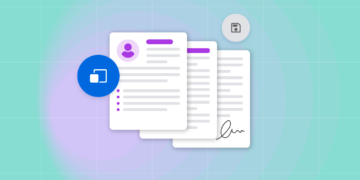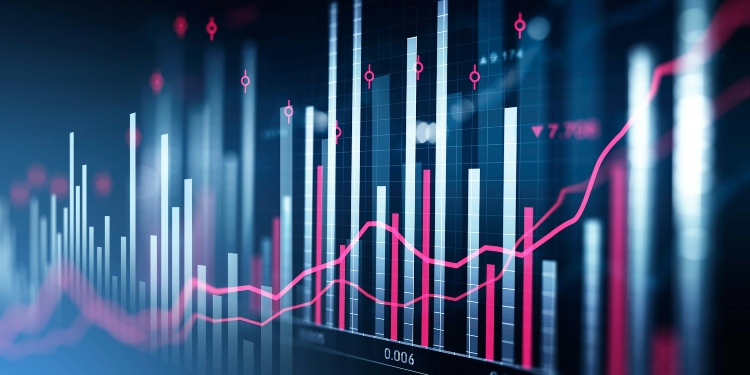The financial world is abuzz with the transformative power of AI, but can AI-driven signals truly unlock the ability to predict long-term market trends? Innovative AI technologies promise deep insight into market behaviors by analyzing vast datasets and uncovering patterns not visible to human eyes, providing deepened analysis. In this topic, we examine both its promise and limitations when shaping investment strategies and creating the future forecasting environment. Wondering if AI can forecast long-term market shifts? With this home page, investors can easily connect with experts who help decipher the potential of AI-driven signals for predicting future trends.
Identifying the Strengths and Limitations of AI in Trend Forecasting
Pinpointing AI’s Advantages: Speed, Scalability, and Bias Reduction
AI systems analyze market data with astonishing speed, breaking down vast amounts of information in seconds. This rapid pace allows investors to spot trends before human analysts can act. AI also scales seamlessly—handling datasets that grow exponentially without sacrificing efficiency.
Bias reduction is another highlight. Unlike humans, AI approaches data without emotional interference, making its insights refreshingly neutral. Imagine having a machine that skips the emotional rollercoaster while predicting market patterns—quite handy, isn’t it?
Yet, relying on AI isn’t without flaws. Machines can’t predict everything, and their accuracy drops during unforeseen scenarios. Remember the 2008 financial crash? No AI tool could foresee that scale of disruption. It’s a reminder that AI, no matter how advanced, still needs human intervention. Human intuition, shaped by experience, refines these predictions by adding layers of context and common sense.
Challenges: Overfitting, Data Quality, and Unpredictable Events
AI systems thrive on data, but poor-quality inputs lead to flawed outputs. Overfitting—when an algorithm is too closely tailored to past data—results in predictions that might work in the short term but fail miserably over more extended periods. And then there’s the unpredictability of “black swan” events, such as geopolitical upheavals, pandemics, or technological breakthroughs. AI struggles to adjust in real-time to these curveballs.
So, while AI is fast and scalable, it’s not invincible. The key lies in using it alongside human judgment. What’s your take—should machines ever wholly replace human intuition in finance?
Case Studies: Success Stories of AI in Long-Term Market Forecasting
Examples of Hedge Funds and Investment Firms Leveraging AI for Strategic Decisions
For example, Renaissance Technologies, a leader in algorithmic trading, uses AI to analyze past patterns and find profitable trades. Companies like BlackRock use AI tools to evaluate portfolio risk and provide predictive insights to clients looking for safer investments. Hedge funds have long embraced AI, using it to find trends hidden in the noise of market data.
Industries Where AI Has Consistently Outperformed Traditional Methods?
AI doesn’t just shine in finance. Take agriculture, where AI predicts commodity price shifts based on weather patterns and global demand. Or healthcare, where machine learning models analyze pharmaceutical trends and investment opportunities. These industries demonstrate AI’s versatility in long-term forecasting. After all, even a farmer benefits from knowing next year’s wheat prices ahead of time!
Learning from Past Failures: Where and Why AI Got It Wrong?
AI, like humans, stumbles occasionally. For example, algorithms misread market sentiment during the GameStop trading frenzy, underestimating the power of retail investors. Such failures often stem from reliance on narrow datasets or overlooking human behavior’s unpredictable nature. These moments remind investors that AI works best as a partner, not as a solo decision-maker.
Curious to see how your industry might benefit from AI forecasting? A conversation with an expert might unlock some surprising opportunities.
The Ethical and Regulatory Implications of AI in Market Forecasting
Balancing Innovation with Investor Protection
As AI tools become more widespread, regulators face the difficult challenge of assuring fairness and transparency without impeding innovation. AI algorithms may unwittingly favor specific demographics or perpetuate systemic biases; striking an appropriate balance is essential – investors require protection without impeding progress.
How AI-Driven Predictions Can Influence Market Dynamics
AI’s predictions often trigger self-fulfilling prophecies. For instance, if an AI forecasts a stock surge, traders might act on this signal, causing the rise predicted. This feedback loop, while fascinating, can destabilize markets when manipulated. Regulations are essential to prevent misuse and safeguard smaller investors from falling victim to algorithmic herd behavior.
Regulatory Frameworks Shaping the Use of AI in Finance
Governments worldwide are drafting policies to oversee AI in finance. Europe’s AI Act proposes stringent guidelines to ensure transparency and accountability in predictive algorithms. Similarly, the U.S. is working on regulations that demand detailed audits of AI systems used in trading. Investors should remain informed about these frameworks, as compliance can affect market trends and their portfolios.
Conclusion
AI-driven signals hold remarkable potential for predicting long-term market trends, but they are not without challenges. While they excel at identifying patterns and offering data-driven insights, external factors like economic shifts and geopolitical events remain unpredictable. As technology continues to evolve, AI could redefine market strategies, blending human expertise with machine precision to navigate the uncertainties of the financial landscape.
David Prior
David Prior is the editor of Today News, responsible for the overall editorial strategy. He is an NCTJ-qualified journalist with over 20 years’ experience, and is also editor of the award-winning hyperlocal news title Altrincham Today. His LinkedIn profile is here.














































































